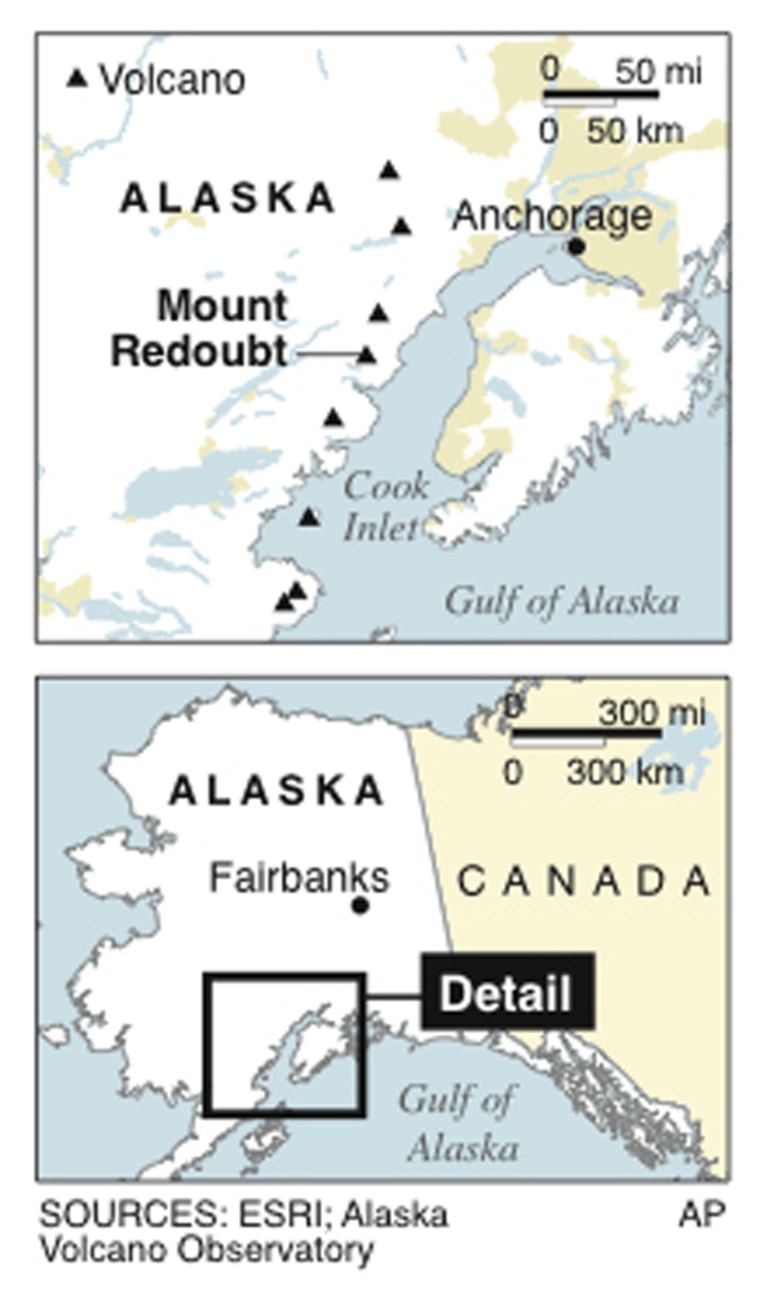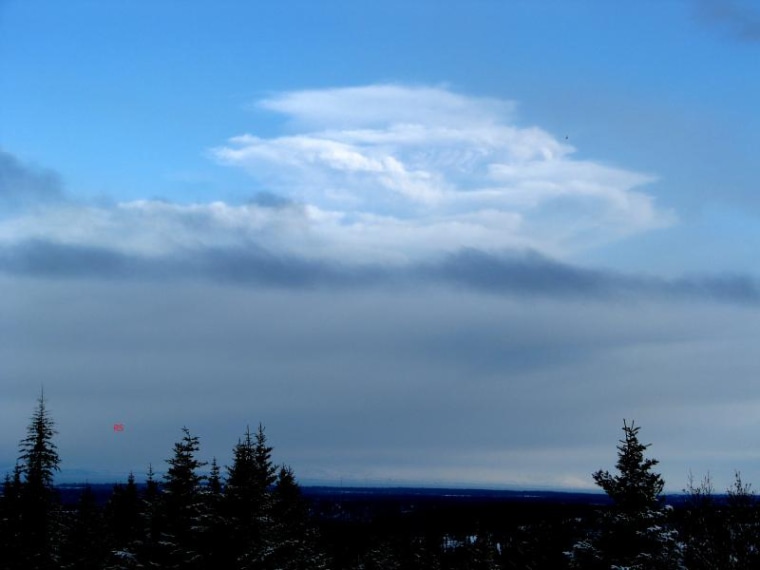Mount Redoubt erupted twice Thursday morning, the second eruption sending ash 65,000 feet into the air, according to the Alaska Volcano Observatory, which warned of a significant emission of razor-sharp volcanic ash.
The National Weather Service said prevailing winds were expected to carry the ash across Cook Inlet and the Kenai Peninsula, where as much as an eighth of an inch of ash could accumulate in some areas this afternoon.
Alaska Airlines canceled at least one flight after the aviation color code was raised to red following the second eruption at 9:24 a.m. local time, or 1:24 p.m. ET. The eruption, which the observatory described as a “major explosive event,” followed a relatively smaller eruption 50 minutes earlier, which shot small amounts of ash 30,000 feet into the air.
They were the seventh and eighth times the volcano has erupted since it rumbled menacingly to life on Sunday for the first time in nearly 20 years. Interior Secretary Ken Salazar said earlier this week that eruptions could continue for several weeks or even months.
Air quality a concernAlaskan volcanic ash is like a rock fragment with jagged edges and has been used as an industrial abrasive. It can injure skin, eyes and breathing passages and cause significant damage engines in planes, cars and other vehicles.
The young, the elderly and people with respiratory problems are especially susceptible to ash-related health problems.
The main concern about the volcano is the air quality, said Steve Morris, manager of Anchorage’s Air Quality Program.
“The volcano will have a big impact not only during the ash fall but afterwards,” Morris said. After Mount Spurr erupted and spread large amount of ash in 1992, “that layer of ash got deposited, and then for weeks and months afterward when we had wind storms, it would stir that stuff back up again, and we’d have some pretty nasty air quality conditions.”
Mudflows, called “lahars,” are another potential problem. The Drift River oil terminal, holding more than 6 million gallons of crude oil, is only 17 miles from the volcano's summit and has been mostly surrounded by floods of mud and water caused by this week’s eruptions.
The facility, which is operated by Cook Inlet Pipe Line Co., evacuated Monday.
Eruptions were expected any timeGeologists had predicted new eruptions soon after they observed a fresh lava dome building in the crater following a round of eruptions Tuesday.

“There was a huge flow of muddy water cascading down the middle of the Drift Glacier, cutting a deep channel in the glacier, with some really impressive waterfalls,” said Kristi Wallace, research geologist with the volcano observatory. “So this is really muddy, sediment-laden water.”
Even so, the timing of the eruptions was unpredictable, said Stephanie Prejean, a geophysicist with the Alaska Science Center.
“The difficult thing with these dome-building eruptions [is] it is very difficult to give short-term warning, because these things can go unstable and fail very quickly, putting an ash plume up to significant heights,” Prejean said.
“These things become unstable, and when they become unstable, they often have another large explosive eruption,” she said.
The 10,200-foot Redoubt, roughly 100 miles southwest of Anchorage, last erupted during a four-month period in 1989 and 1990.
The volcano became restless earlier this year. The observatory had warned in late January that an eruption could occur at any time.
More on |
